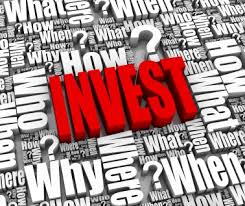 My Comments: Followers of this blog have seen the ideas expressed by Scott Minerd. I share them with you as I think they are important ideas, intended by me to help you better understand the role that money plays in your life. As I’ve expressed many times, we live in a society where having more money is better than having less.
My Comments: Followers of this blog have seen the ideas expressed by Scott Minerd. I share them with you as I think they are important ideas, intended by me to help you better understand the role that money plays in your life. As I’ve expressed many times, we live in a society where having more money is better than having less.
Scott Minerd, Chairman of Investments, Guggenheim Partners, May 20, 2016
I grew up in Western Pennsylvania during a halcyon period. It was the 1960s, the postwar industrial economy was booming, and Pittsburgh supplied about 70 percent of the world’s steel. There was a feeling of great prosperity and limitless opportunity, but that would soon change. By the end of the 1970s the steel mills I knew as a boy had been shuttered. The collapse of the massive regional industrial complex left blighted towns, impoverished lives, and a polluted environment. I wondered why my hometown failed so miserably, why the roadmap for economic development in the region ended with such disaster.
________________________________________
“At its core, sustainable development means investing in safe, reliable infrastructure and financing projects that will power our world, feed our people, and foster growth in ways that preserve and protect our environment.”
________________________________________
Looking back at this and many other hard lessons from history, we see how critical sustainable development is to healthy economic growth and social progress, which is why it is also the “true north” by which every investment compass must navigate. Sustainable development is about delivering strong and stable investment returns in efficient, effective, consistent ways for the future of the world. At its core this means investing in safe, reliable infrastructure where almost none exists, and financing innovation in the sectors that will power our world, feed our people, and foster growth in ways that preserve and protect our environment. That is sustainable development.
But capital will only flow to sustainable development in the future if it can also meet the institutional investor’s mandate to generate strong and stable returns.
The good news is achieving strong and stable returns no longer requires trade-offs. We no longer need to sacrifice economic growth for environmental protection, or give up compelling returns in order to make responsible investments. In fact, in the future, I believe it will be impossible to deliver strong and stable returns without a principled approach to sustainability.
Nowhere is this principled approach to investing needed more than in the Arctic region. The Arctic is truly the final frontier market for global investors, and it is the bellwether for the sustainable development movement. Home to 12 million people and $450 billion in annual economic output, the Arctic already produces a significant share of the world’s food, minerals, and energy. As climate change affects the Arctic, the region will only grow in environmental and economic importance to the world. Arctic sea ice currently covers 65 percent less of the region than it did in 1979. By 2040, the Northern Sea Route could be open year round, resulting in faster, more energy-efficient global trade. In addition, the Arctic holds an estimated one-quarter of the world’s undiscovered oil and gas reserves, but its ability to generate and share energy from wind, hydro, tidal, geothermal, solar, and biomass will make it a leader in the future of clean energy.
As the climate transforms the Arctic, so will the Arctic transform the world, creating extraordinary long-term investment opportunities with real responsibilities. To adapt and thrive, communities will need critical and careful investment, paired with a strong commitment to protect and preserve the environment for future generations.
The World Economic Forum Global Agenda Council on the Arctic took an important step towards this goal by establishing six foundational and formative principles for responsible investment in the Arctic, called the Arctic Investment Protocol. We estimate that infrastructure investments in the region are expected to reach US$1 trillion over the next 15 years, and these principles set clear standards for sustainable and responsible business practices, governance, and environmental stewardship.
The Arctic, with its possibilities and challenges, is just one example of the global need for sustainable development. Last year, 193 nations adopted the United Nations Global Goals for Sustainable Development (SDGs), which aim to end extreme poverty, protect the planet, and ensure prosperity for all.
The SDGs require up to an estimated $4.5 trillion per year in capital investment in developing countries between 2015 and 2030. Current investment in these areas is around $1.4 trillion, leaving an annual investment gap of around $3.1 trillion. If just 1 percent of the $300 trillion global capital stock were allocated to sustainable development each year for the next 15 years, we could free the world from extreme poverty, spare millions from the perils of preventable disease and lack of education, and promote freedom and economic opportunity. We can achieve this and so much more if we recognize we no longer live in a world of trade-offs. Smart, strategic investments in sustainable development today can deliver strong, stable returns, and make the world a better place.

